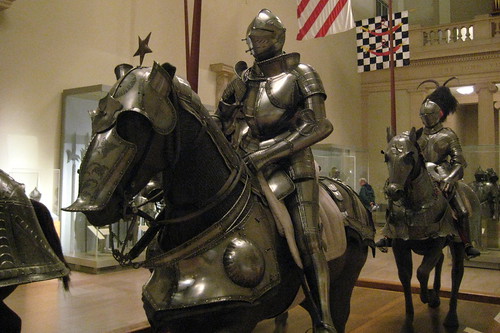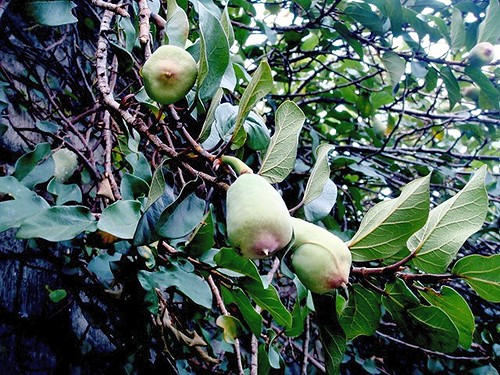(Posted from China Injection Mold blog)
Check out these china mould images:
NYC – Metropolitan Museum of Art: Armor for Man and Horse
Image by wallyg
Armors for Man and Horse
Etched steel
Wolfgang Grosschedel (record 1517-1562)
German (Landshut), man’s armor around 1535, horse armor date 1554
Wolfgang Grosschedel was the most famous Landshut armorer of his generation. Included among his patrons were the Holy Roman Emperor and Philip II of Spain. These armors for man and horse constitute superb examples of Grosschedel’s work from different periods in his career.
The man’s armor, dating from about 1535, is stamped with Grosschedel’s personal mark and that of LAndshut. The etched decoration includes human figures and ornaments copied from engravings by the German printmaker Barthel Beham.
The horse armor, dated 1554, is complete and homogenous and though unmarked can be attributed to Grosschedel on stylistic grounds.
**
The collection of armor, edged weapons, and firearms in The Metropolitan Museum of Art ranks with those of the other great armories of the world, in Vienna, Madrid, Dresden, and Paris. It consists of approximately 15,000 objects that range in date from about 400 B.C. to the nineteenth century. Though Western Europe and Japan are the regions most strongly represented–the collection of more than five thousand pieces of Japanese armor and weapons is the finest outside Japan–the geographical range of the collection is extraordinary, with examples from the Near East, the Middle East, India, Central Asia, China, Southeast Asia, Indonesia, and North America. The Arms and Armor Galleries were renovated and reinstalled in 1991 to display to better effect the outstanding collection of armor and weapons of sculptural and ornamental beauty from around the world.
The Metropolitan Museum of Art‘s permanent collection contains more than two million works of art from around the world. It opened its doors on February 20, 1872, housed in a building located at 681 Fifth Avenue in New York City. Under their guidance of John Taylor Johnston and George Palmer Putnam, the Met’s holdings, initially consisting of a Roman stone sarcophagus and 174 mostly European paintings, quickly outgrew the available space. In 1873, occasioned by the Met’s purchase of the Cesnola Collection of Cypriot antiquities, the museum decamped from Fifth Avenue and took up residence at the Douglas Mansion on West 14th Street. However, these new accommodations were temporary; after negotiations with the city of New York, the Met acquired land on the east side of Central Park, where it built its permanent home, a red-brick Gothic Revival stone "mausoleum" designed by American architects Calvert Vaux and Jacob Wrey Mold. As of 2006, the Met measures almost a quarter mile long and occupies more than two million square feet, more than 20 times the size of the original 1880 building.
In 2007, the Metropolitan Museum of Art was ranked #17 on the AIA 150 America’s Favorite Architecture list.
The Metropolitan Museum of Art was designated a landmark by the New York City Landmarks Preservation Commission in 1967. The interior was designated in 1977.
National Historic Register #86003556
Ficus pumila L.
Image by Ahmad Fuad Morad
Kelana Jaya, Selangor, Malaysia.
Ficus pumila L. Moraceae. CN: [Malay – Ara jalar], Climbing fig, Creeping fig, Creeping rubberplant, Figvine. Native to China, Japan, Taiwan, Vietnam. Elsewhere cultivated as ornamental. Creeping fig is an enthusiastic climber able to scramble up vertical surfaces 3 and 4 stories tall with the aid of a powerful adhesive. This vine coats surfaces with a tracery of fine stems that are densely covered with small heart shaped leaves that are 1 inch long by about 2 cm wide, they are held closely to the surface creating a mat of foliage that extends barely 2.5 cm from the surface. These are the juvenile leaves. Once the vine has reach the top of its support if will begin to form horizontal branches on which adult foliage is borne. Adult leaves are held alternately in two rows along these branches. They are more leathery than the juveniles, and are dark green, and about 7.6 cm long by 5 cm wide. The fruit is a fig (a sycamore). These are borne only on the horizontal stems, they are pale green in color and about 7.6 cm long by 6.4 cm wide. Most experts warn against allowing the climbing fig to attach itself to your home, garage, or other valuable buildings. This winding vine will peel paint, pop screws, and otherwise wreak havoc on fences, buildings, and any other structure. It can also attract insects and mold that cause costly damage. Very invasive and difficult to eradicate. The seeds and other plant parts are poisonous.
Synonym(s):
Ficus awkeotsang Makino [Ficus pumila var. awkeotsang]
Ficus repens Rottler [Ficus pumila var. pumila]
Ref and suggested reading:
www.ars-grin.gov/cgi-bin/npgs/html/taxon.pl?16951
en.wikipedia.org/wiki/Ficus_pumila
www.bitterrootrestoration.com/medicinal-plants/creeping-f…
Read more about Nice China Mould photos
No comments:
Post a Comment